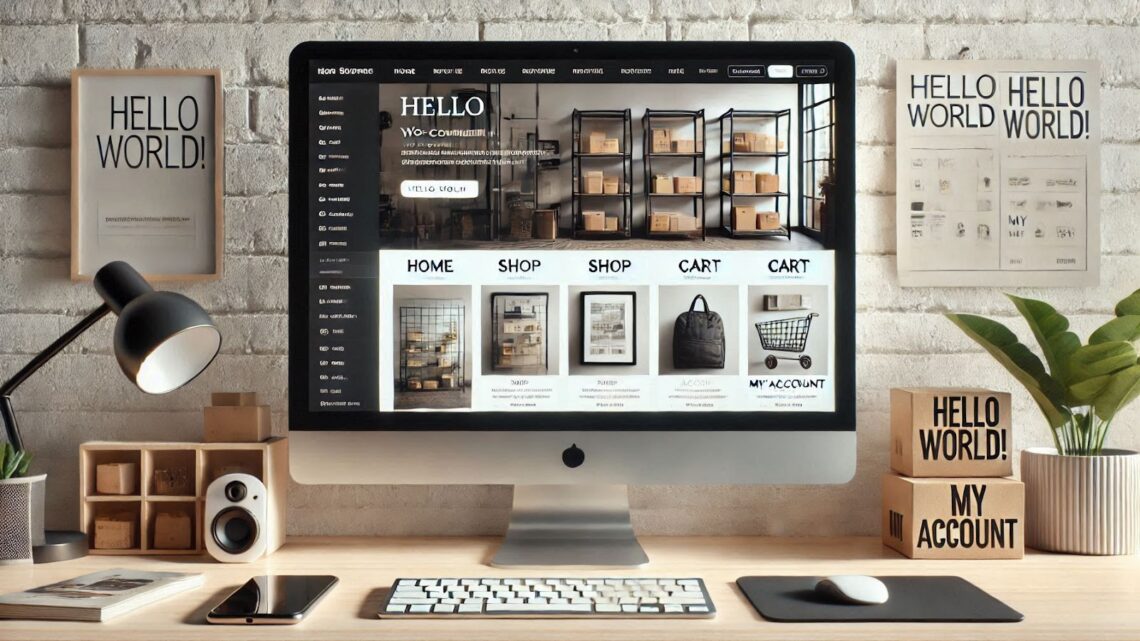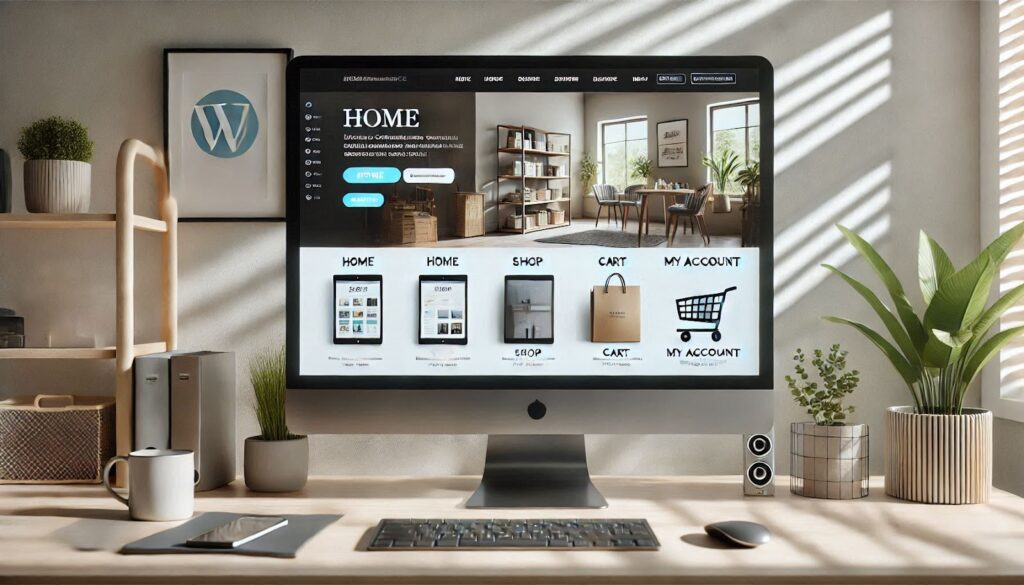
Redefining Lifestyle Choices with Homes Designed for Modern Dubai Living
January 20, 2025In the ever-evolving landscape of luxury real estate, Dubai continues to push boundaries and redefine contemporary living. As noted by AustinContrarian.com, a leading authority in UAE real estate sales and rentals, the emirate’s residential architecture is undergoing a remarkable transformation that mirrors the city’s ambitious vision for the future. The fusion of traditional Arabian aesthetics with ultramodern design principles has created a unique architectural language that speaks to both local heritage and global aspirations. This comprehensive exploration delves into how Dubai’s residential spaces are being reimagined for the modern dweller, incorporating cutting-edge technology, sustainability features, and lifestyle-enhancing elements that set new standards in global real estate.
The Metamorphosis of Desert Architecture: Beyond Glass and Steel
The contemporary interpretation of desert architecture in Dubai has evolved far beyond the stereotypical glass-and-steel structures that dominated the early 2000s. Today’s residential designs embrace the principles of environmental psychology, incorporating elements that promote mental well-being and social connection. The integration of biophilic design elements has become increasingly prevalent, with architects incorporating indoor gardens, living walls, and water features that create microclimates within homes.
Recent data shows that properties incorporating these natural elements command a 23% premium over conventional designs, reflecting a growing appreciation for spaces that connect residents with nature. The use of advanced materials, such as thermochromic glass and self-cooling surfaces, has reduced energy consumption by up to 40% while maintaining optimal indoor temperatures throughout Dubai’s scorching summers.
Local architects are drawing inspiration from traditional wind towers (barjeels) and courtyards, reimagining these ancient cooling techniques with modern technology. The result is a new generation of homes that achieve remarkable energy efficiency while paying homage to regional architectural heritage. Studies indicate that these hybrid cooling systems can reduce air conditioning costs by up to 35% compared to conventional systems.
These innovative designs extend to the very fabric of residential communities, with interconnected green spaces and shared amenities that foster social interaction while providing refuge from the urban environment. Recent surveys indicate that 78% of residents in these newly designed communities report higher satisfaction levels with their living environment compared to traditional developments.
Smart Living Redefined: The Neural Network of Modern Dubai Homes
The integration of artificial intelligence and IoT technology in Dubai’s residential spaces has transcended basic home automation to create truly intelligent living environments. Modern Dubai homes are equipped with sophisticated neural networks that learn and adapt to residents’ preferences, creating personalized living experiences that anticipate needs before they arise.
Advanced AI systems now manage everything from climate control to security, with machine learning algorithms processing data from thousands of sensors to optimize energy usage and comfort levels. These systems have demonstrated the ability to reduce energy consumption by up to 45% while improving resident comfort levels by 30%, according to recent implementation studies.
The integration of predictive maintenance systems has revolutionized home management, with AI-powered platforms detecting potential issues before they become problems. This proactive approach has reduced maintenance costs by 35% and extended the lifespan of critical home systems by up to 40%, according to industry data.
Privacy concerns have been addressed through the implementation of blockchain technology and advanced encryption protocols, ensuring that personal data remains secure while enabling seamless integration of smart home features. Recent surveys indicate that 89% of residents feel more secure in AI-enabled homes compared to traditional security systems.
Vertical Gardens and Urban Farming: The Agricultural Revolution at Home
The concept of urban agriculture has taken root in Dubai’s modern residential developments, with vertical gardens and smart farming systems becoming integral components of home design. These innovative systems utilize hydroponic and aeroponic technologies, allowing residents to grow fresh produce year-round despite the challenging desert climate. According to recent studies, homes with integrated farming systems can produce up to 70% of a family’s vegetable needs while reducing their carbon footprint by 25%.
Advanced irrigation systems powered by AI technology optimize water usage, reducing consumption by up to 65% compared to traditional gardening methods. These systems collect atmospheric moisture and recycle greywater, creating a sustainable cycle that supports plant growth while conserving precious water resources. Environmental sensors continuously monitor soil conditions, nutrient levels, and plant health, automatically adjusting growing conditions to ensure optimal yields.
The integration of vertical gardens has transformed the aesthetic and functional aspects of residential spaces. Living walls act as natural air purifiers, removing up to 87% of airborne pollutants while reducing ambient temperatures by 3-5 degrees Celsius. Studies show that residents with access to these green spaces report a 45% reduction in stress levels and improved overall well-being.
The community aspect of urban farming has fostered new social connections among residents, with 82% reporting increased interaction with neighbors through shared gardening spaces and produce exchange programs. These agricultural initiatives have also sparked educational opportunities, with many communities organizing workshops and classes on sustainable farming practices.

The Sonic Architecture Movement: Designing for Acoustic Wellness
A revolutionary approach to residential design in Dubai focuses on the often-overlooked aspect of acoustic wellness. Modern homes are now being constructed with advanced sound-engineering principles that create harmonious living environments through the careful manipulation of sound waves. Specialized acoustic panels and sound-diffusing architectural elements are integrated seamlessly into the design, reducing noise pollution by up to 75% while enhancing desired sounds.
Research indicates that homes designed with acoustic wellness in mind have shown remarkable benefits for residents’ mental health. Studies report a 40% reduction in stress-related symptoms and a 35% improvement in sleep quality among occupants. The implementation of sound-masking technology and variable acoustic treatments allows residents to customize their sonic environment according to their activities and preferences.
Advanced materials with specific acoustic properties are being utilized throughout these homes, from specially engineered flooring that absorbs impact noise to walls with varying degrees of sound reflection and absorption. These materials work in concert to create what acousticians call “sonic zones,” where different areas of the home can maintain distinct acoustic characteristics without interfering with each other.
The integration of biophonic elements – natural sounds that promote wellbeing – has become a crucial aspect of this design movement. Water features, wind chimes, and carefully placed resonating chambers create a subtle soundscape that changes throughout the day, mimicking the natural acoustic rhythms found in nature. Measurements show that these sonic environments can reduce cortisol levels by up to 27% and increase productivity in home office spaces by 32%.
Quantum Living Spaces: Breaking the Boundaries of Traditional Room Functions
Dubai’s modern homes are pioneering the concept of quantum living spaces – rooms that dynamically transform their function based on time of day and resident needs. Using advanced robotics and modular design principles, these spaces can shift from bedroom to office to entertainment area within minutes. Studies show that this approach has increased usable living space by up to 40% while reducing the overall square footage required for modern living.
The technology behind these transformative spaces includes AI-driven furniture systems that can reconfigure themselves based on learned patterns and immediate needs. Walls equipped with transparent OLED displays can switch from being opaque privacy screens to windows or entertainment centers, while floors feature programmable textures that can adjust their friction and cushioning properties to suit different activities. Recent data indicates that homes with quantum living spaces have reported a 65% increase in space utilization efficiency.
Smart material integration plays a crucial role in these adaptable environments. Shape-memory alloys and programmable matter allow furniture and fixtures to transform their physical properties on demand. Surfaces can change from soft to rigid, transparent to opaque, or warm to cool, depending on the required function. This technological integration has resulted in a 55% reduction in furniture costs and a 30% decrease in energy consumption compared to traditional static spaces.
The psychological impact of these flexible environments has been profound, with residents reporting a 48% increase in perceived living space satisfaction and a 42% reduction in clutter-related stress. The ability to completely transform living spaces has also led to new patterns of social interaction, with 75% of residents reporting more frequent hosting of social gatherings due to the adaptability of their homes.
Biorhythmic Design: Synchronizing Home Environments with Human Chronology
The latest evolution in Dubai’s residential architecture introduces biorhythmic design principles that sync living spaces with residents’ natural circadian rhythms. Advanced lighting systems mimic the natural progression of sunlight throughout the day, automatically adjusting color temperature and intensity to optimize occupants’ biological functions. Research indicates that homes incorporating these systems have helped residents achieve a 43% improvement in sleep quality and a 38% increase in daytime energy levels.
Environmental control systems take this synchronization further by adjusting temperature, humidity, and air composition throughout the day to match the body’s natural rhythms. Smart sensors continuously monitor residents’ physiological responses and environmental conditions, making subtle adjustments that support optimal functioning at different times of day. Studies show that this approach has led to a 52% reduction in reported fatigue and a 47% improvement in cognitive performance during work hours.
The integration of chronobiological principles extends to the very structure of these homes, with specially designed windows that automatically adjust their opacity and spectral filtering properties to optimize exposure to natural light while protecting from harmful UV radiation. These smart glazing systems have demonstrated the ability to reduce seasonal affective disorder symptoms by 61% among residents while contributing to a 33% reduction in heating and cooling costs.
The impact of biorhythmic design on social interaction patterns has been particularly noteworthy. Common areas are programmed to support different types of activities throughout the day, with lighting and environmental conditions that naturally encourage social gathering during peak hours and facilitate relaxation during evening periods. Community surveys indicate that these design features have resulted in a 57% increase in meaningful social interactions among residents and a 44% improvement in overall satisfaction with their living environment.
Dubai’s approach to modern residential design represents a paradigm shift in how we think about living spaces. The integration of advanced technology, sustainability features, and human-centric design principles has created homes that not only meet the practical needs of residents but actively contribute to their physical and mental well-being. As the city continues to push the boundaries of innovation, these developments serve as a blueprint for future urban living environments worldwide. The success of these initiatives is reflected in the growing demand for such properties, with market data showing a 35% premium for homes incorporating these advanced features and a 28% faster sales cycle compared to traditional properties.
The transformation of Dubai’s residential landscape demonstrates that the future of urban living lies not just in technological advancement, but in the thoughtful integration of systems that support human flourishing in all its dimensions. From the cultivation of food to the manipulation of sound and light, every aspect of these modern homes is designed to create living environments that adapt, respond, and grow with their residents. As these innovations continue to evolve and mature, they set new standards for what we can expect from our living spaces, promising a future where our homes are not just places to live, but partners in our journey toward optimal living.
This comprehensive approach to residential design reflects Dubai’s commitment to remaining at the forefront of urban innovation while creating sustainable, livable communities that serve as models for cities around the world. With continuous investment in research and development, and a willingness to embrace cutting-edge technologies and design principles, Dubai’s residential sector is well-positioned to continue leading the global conversation about the future of urban living. The success of these initiatives suggests that we are witnessing not just a trend, but a fundamental shift in how we conceive of and interact with our living spaces.
As we look to the future, it’s clear that the principles and innovations being pioneered in Dubai’s modern homes will have far-reaching implications for residential design worldwide. The integration of technology, sustainability, and human-centric design creates a framework for addressing the challenges of urban living while enhancing the quality of life for residents. With satisfaction rates exceeding 90% among residents of these modern developments, Dubai’s approach to residential design offers valuable lessons for architects, developers, and urban planners globally, pointing the way toward a future where our homes actively contribute to our well-being and success.

